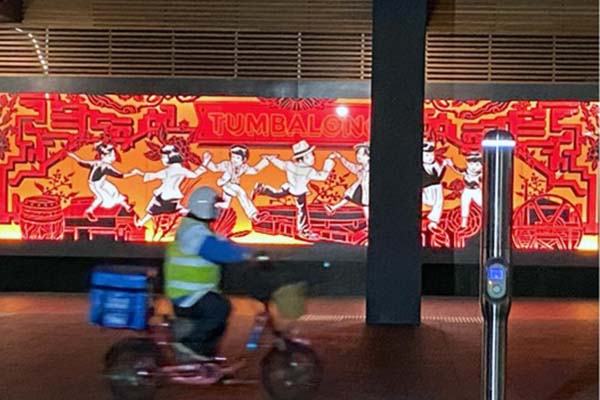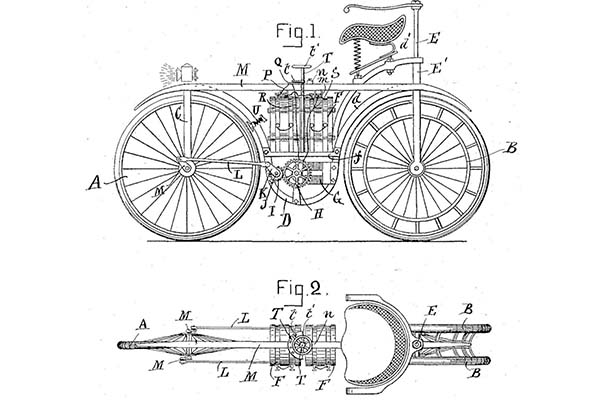Aaron Gordons’s article, about e-bike infrastructure in America, considers a challenge that Australian bicycle advocates would be happy to have. With more people buying e-bikes in the US than EVs, American bicycle infrastructure is straining at the seams. This is because the increasing number of e-bikes are forced to compete on the small amount of road space left over for cyclists and pedestrians. This is unfair given that bicycles take up way less space than cars and must change if cities are to meet future challenges.

Micromobility in Chinatown
The first patent for an e-bike was in 1895 by Ogden Bolton, Ohio.
But it wasn’t until Yamaha developed its prototype in 1989 followed by a pedal-assist in 1993 that global production gained momentum. New technologies like Lithium Ion batteries made e-bikes more powerful and cheaper to produce. Popularity surged alongside the global need to decarbonise, and a pivot towards cheaper more efficient transportation. This was amplified particularly during COVID, to meet global demand for online delivery. Micromobility systems- bikes, e-bikes and e-cargo bikes solved the logistical problem of the last mile. This is because one e-cargo bike connected to a logistics hub can make multiple trips that a truck battling through traffic can’t. What’s more, it can all be done on cornflakes for fuel and zero emissions.

‘Investing in bicycle infrastructure is a social, economic and environmental necessity.’ Peter Mclean, CEO, Bicycle NSW.
‘Building more roads only adds to congestion and pollution which is a massive burden on the environment and the economy.’ 27% of the planet’s C02 emissions come from the transport sector and by 2036 congestion will cost Australia 36.9 $billion. Queensland Health estimates that investment in bicycle infrastructure returns 500% value, by reducing congestion and improving public safety.
‘2 million car trips under 2 km are made every day in NSW. Every bike on the road is one less polluting car taking up space and endangering pedestrians. Instead of having bikes and e-bikes increasingly competing with the narrow space left for pedestrians, we need to fairly reallocate the vast amount of road dominated by cars. Transport for NSW now has policies to reflect that.’ Peter McLean, CEO, Bicycle NSW.

Shoppers on Pyrmont Bridge Rd shared path
Switching to micromobility works, especially with the right infrastructure.
- Future proofing Toronto’s bicycle network saw a 40% increase in deliveries by bike from 2019-22.
- PostNL in Utrecht reduced annual Co2 emissions by 35,000 kg per year.
- Micro-logistics hubs and last-mile services in London could reduce traffic volumes by 13% vehicle emissions by 17%.
- Bogota’s Bici Carga (cargo bike) trial show that up to 4.2 tons of emissions can be saved.
- A pilot project in New York resulted in a 109% increase in deliveries by cargo bikes.
‘The prevalence of exciting, fun, convenient, and environmentally friendly electric mobility devices demands a re-think of what a bike lane should be.’ Aaron Gordon, Vice
Fiona Campbell, City of Sydney’s Manager for Cycling Strategy, is someone who thinks deeply about the usefulness of bike lanes as she commutes to work daily on her e-cargo trike. Because the trike is wide compared to a bicycle, Fiona is acutely aware of the need for infrastructure suitable to a variety of modes.
‘Providing/future-proofing for cargo bikes is recognised in our Cycling Strategy and Action Plan 2018-2030. Action 1.14 is “Consider all bike network users, including those on cargo bikes, ebikes, trishaws and mobility scooters, in the design of infrastructure”. We have a preferred width for bidirectional cycleways of 3m and for unidirectional of 2m, which we try to achieve. e.g Oxford Street cycleway will be 3 to 3.5m for most of it …Quietways (30km speed limits or less) are also part of the network that works well for larger bikes.’

Image courtesy of Vice

